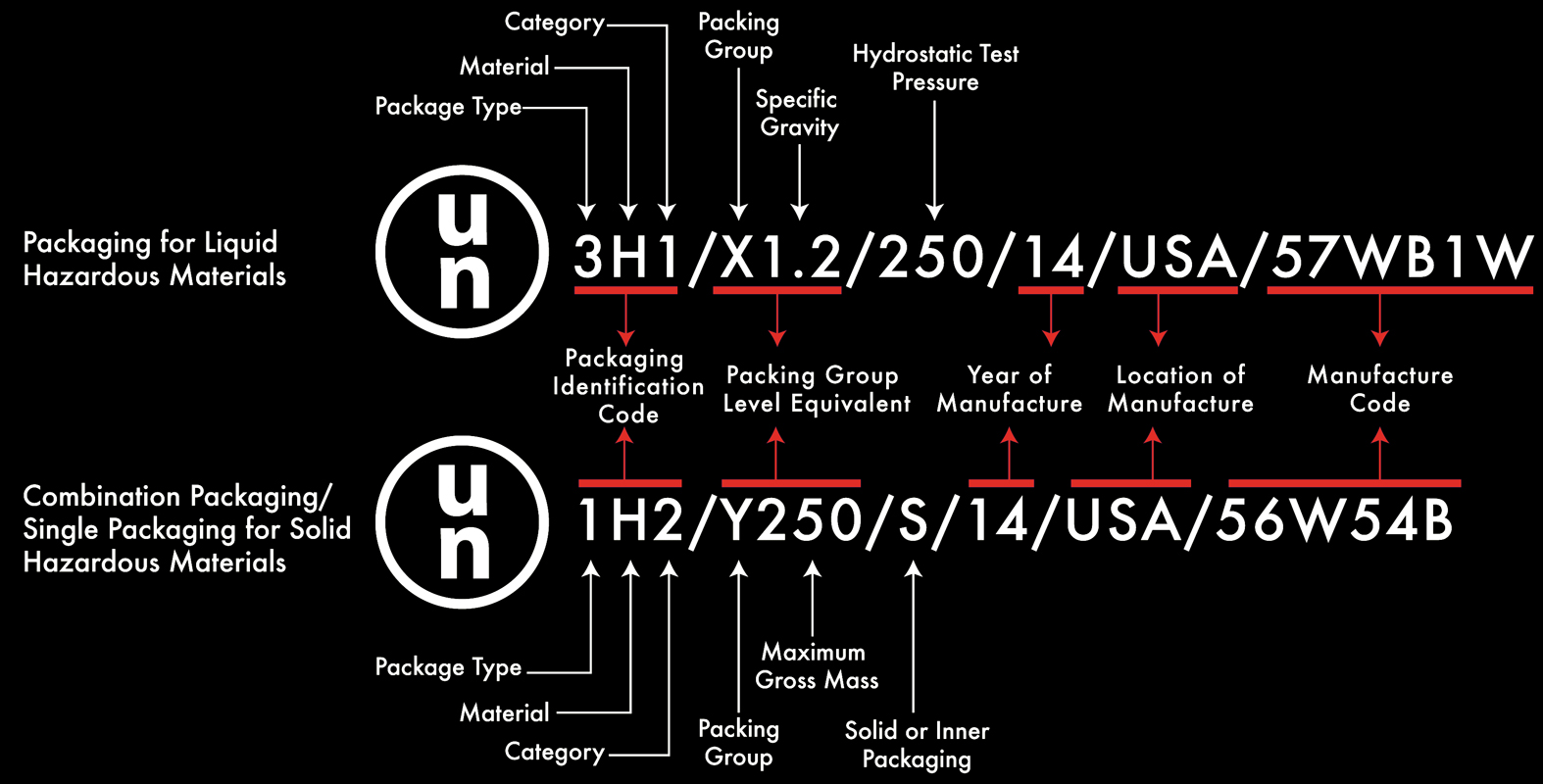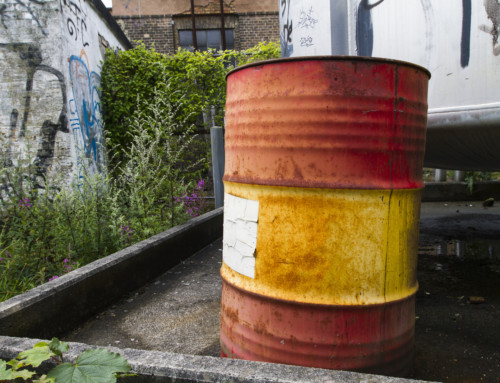The UN container marking system was designed to quickly communicate several characteristics of Hazmat packaging along with information for what can safely be contained in the packaging. This system has been in place in the United States since 1990 when the DOT adopted the United Nations standards for performance oriented packaging (POP). Packagings get their UN rating when they meet certain standards in testing. UN numbers are embossed on the packaging by manufacturer or added later with a durable mark (sticker) by a reconditioner or remanufacturer.
It’s probably rare at this point, but if you see something calling for a 17h drum or 17c container it’d be a good idea to update the specification resource.
We get a lot of phone calls and emails with questions about how U/N numbering works. So we created this guide for you. You can use the example and explanations below to learn more about what UN numbers mean.
Example: UN 1A1/Y1.2/100/10 USA/XXXX
UN Symbol – The marking always begins with a UN symbol. Usually its a lowercase “u” over a lowercase “n” in a circle. Sometimes the UN Marking is an uppercase “UN.”
Identification Code – Next, is the three-part packaging identification code. The first number is the type of container, the second number is the material that the container is made out of, and the third number is the packaging head. The example above is a Drum (1) made of steel (A) with a closed head (1).
| Container Type | Container Material | Head Type |
|---|---|---|
| 1 = Drums | A = Steel | 1 = Closed Head |
| 2 = Barrels | B = Aluminum | 2 = Open Head (removable lid) |
| 3 = Jerricans | C = Wood | |
| 4 = Boxes | G = Fibre | |
| 5 = Bags | H = Plastic | |
| 6 = Boxes |
Packing Group – Next is the container’s packing group rating. There are three different packing groups (1,2 and 3) and they indicate the relative danger of a material. Packing group 1 is the greatest danger, 2 medium and 3 the least dangerous. An X marking indicates that the packaging can contain materials in packing groups 1,2 and 3. A Y indicates that the packaging can contain a material in packing groups 2 and 3. While a Z indicates that the packaging can contain a material from packing group 3 only. The example above has a Y marking indicating that it can contain either packing group 2 or 3 material.
Gross Mass or Specific Gravity – UN numbers on drums rated for solids and liquids are different in this and the following section. Some drums will have two different U/N numbers, one for solids and one for liquids. In the example there is one number and it indicates that the drum is rated for liquids.
Liquids – For liquids, a specific gravity number is indicated. Specific gravity is the ratio of density of liquid to water. The container can be filled completely and safely hold a liquid with the specific gravity indicated by the marking. The example above has a 1.2 indicating that it can safely be filled with a liquid that has a specific gravity of 1.2.
Solids – The gross mass for solids is the maximum gross mass of solids the container or inner packagings can contain in kilograms (weight). To convert to pounds multiply this number by 2.2.
Further Measurements for Solids or Liquids –
Liquids – The hydrostatic pressure is included in kPa (kilopascals) rounded down to the nearest 10 kPa. Our example above has a 100 kPa hydrostatic rating.
Solids – A container rated for solids will simply include an uppercase “S” next.
Year of Manufacture – Usually a two digit number indicating the year the container was manufactured. The example above has a “10” indicating that it was made in 2010.County of Manufacture
Country of Manufacture – The symbol of the country where the manufacturing took place is marked next. The example above reads USA indicating that the container was made in the United States.
Manufacturer – The last number is an identification number for the manufacturer or certifying agency. The example above just has XXXX where the manufacturer’s assigned UN number is usually located.









